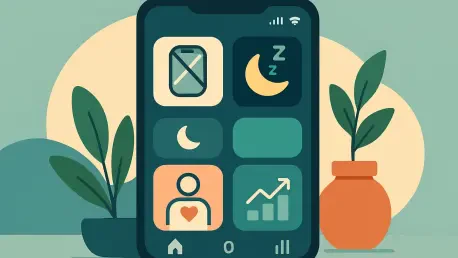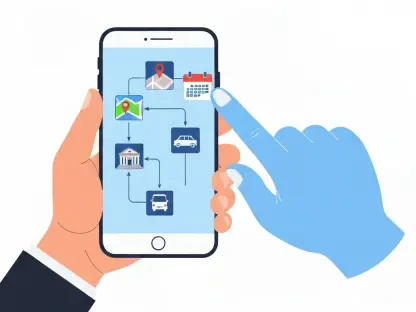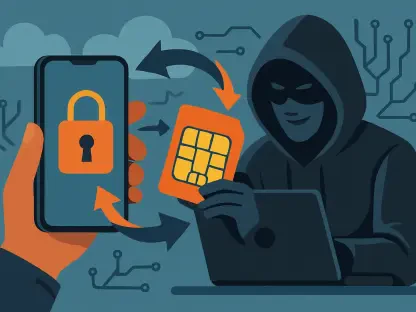In today’s digital era, smartphones have become an extension of daily life, often consuming hours that could be spent on more meaningful pursuits, and the irony of using technology to combat technology addiction is striking, yet it’s a concept gaining traction as digital wellness becomes a pressing concern. Google’s recent Play Store Awards highlighted Focus Friend, an app crafted by YouTuber Hank Green, as the standout application of the year for its innovative approach to reducing screen time. This recognition raises a compelling question: can a piece of software genuinely help users break free from the grip of constant connectivity, or is it merely a Band-Aid for a deeper societal issue? As smartphones continue to dominate attention spans, exploring the potential of such tools offers a glimpse into whether technology can solve the very problems it often exacerbates. This discussion delves into the mechanisms, psychology, and broader implications of apps designed to foster mindfulness in an age of endless notifications.
Unpacking the Rise of Digital Wellness Tools
Smartphones have woven themselves into the fabric of modern existence, with studies showing that many users check their devices over 100 times a day, often without conscious intent. This pervasive habit has sparked a surge in digital wellness tools aimed at curbing excessive usage, with Focus Friend emerging as a notable example. The app employs a timer-based system where users earn virtual rewards for a cartoon “bean” character by steering clear of other applications. This gamified approach seeks to transform the mundane act of focus into an engaging challenge. While the concept mirrors other tools in the market, such as those that grow virtual landscapes with sustained attention, Focus Friend distinguishes itself through charming visuals and intuitive design. Yet, the core challenge persists: can a digital nudge truly alter behaviors so deeply ingrained by years of habitual scrolling and tapping, or does it merely offer a temporary distraction from the larger issue of tech dependency?
The effectiveness of digital wellness apps like Focus Friend often hinges on their ability to sustain user engagement over extended periods. Gamification, while initially captivating, may lose its allure if the rewards feel repetitive or inconsequential. Beyond this, the app’s design prioritizes accessibility, avoiding mandatory account setups and offering affordable premium features. However, skepticism remains about whether such tools address the root causes of smartphone overuse, such as the dopamine-driven feedback loops engineered by social media platforms. For many, the pull of instant gratification from notifications and likes may outweigh the appeal of virtual trinkets. This tension between short-term incentives and long-term behavioral change suggests that while apps can provide a starting point for mindfulness, their impact might be limited without a deeper personal commitment to reducing screen time. The broader question looms: are these tools a genuine solution or just a symptom of a tech-saturated culture?
What Makes Focus Friend Unique in a Crowded Market
Amid a sea of productivity and wellness apps, Focus Friend carves out a niche with its blend of whimsy and practicality, earning accolades for its user-centric approach. The app’s signature feature—a customizable cartoon character that benefits from the user’s focus—infuses a playful element into the serious task of limiting phone use. Coupled with options for personalization and a low-cost subscription for added perks at just $2 monthly, it appeals to a diverse audience seeking simple yet engaging solutions. Unlike some competitors that demand extensive setup or data sharing, Focus Friend prioritizes ease of use, allowing users to dive in without cumbersome barriers. However, despite these strengths, critics point out that its core functionality mirrors existing tools, raising doubts about whether its charm alone can drive lasting change. Could its appeal be more about aesthetic preference than groundbreaking innovation?
Diving deeper into the app’s reception, it becomes clear that personal taste plays a significant role in its perceived effectiveness. For users drawn to its lighthearted design, Focus Friend may serve as a delightful motivator to put the phone down. Yet, for others, the similarities to apps like Forest or Focus Traveller might render it less compelling, especially if they’ve already tried and abandoned similar solutions. This variability underscores a critical point: digital wellness tools often succeed or fail based on individual readiness to change rather than the app’s inherent features. While Google’s endorsement highlights Focus Friend as a leader in this space, the broader challenge lies in whether any app can universally shift habits shaped by years of digital immersion. The distinction might lie less in the tool itself and more in the mindset of the person wielding it, pointing to a need for complementary strategies beyond software.
Trends Shaping Mindful Technology Beyond One App
Looking at the wider landscape of app development, Google’s awards reveal a trend toward specialization, where technology is increasingly tailored to address specific user needs with a balance of utility and enjoyment. From Luminar, a photo-editing app with seamless multi-device integration and AI enhancements, to Calm, optimized for immersive XR headset experiences, developers are pushing boundaries to create targeted solutions. This shift indicates a growing recognition that users crave apps that not only serve a purpose but also enrich their interaction with technology. Within this context, digital wellness tools like Focus Friend fit into a larger movement of mindful innovation, aiming to counteract the overstimulation of constant connectivity. Yet, their success remains tied to how well they integrate into users’ lives without feeling like just another digital burden to manage.
Another dimension of this trend is the incorporation of advanced technologies to elevate user experience, reflecting a future where apps do more than just function—they adapt and personalize. The diversity of award-winning applications showcases how developers are leveraging AI and cross-platform compatibility to cater to niche demographics, from creative professionals to mindfulness seekers. However, this also raises a paradox for wellness apps: by keeping users engaged with their devices, even for positive reasons, they may inadvertently perpetuate screen time. This duality suggests that while the tech industry is making strides in promoting balance, the fundamental reliance on smartphones as the medium for these solutions could undermine their ultimate goal. The challenge for developers is to design tools that encourage genuine disconnection rather than a different form of digital interaction.
The Behavioral Science Fueling Digital Detachment
At the heart of apps like Focus Friend lies the principle of gamification, a strategy rooted in behavioral psychology that aims to make mundane or challenging tasks more rewarding. By offering small, tangible incentives for avoiding distractions—such as earning virtual items after a set period of focus—these apps tap into the brain’s reward system, mirroring the same mechanisms that make social media so addictive. The intent is to reframe phone avoidance as a positive achievement rather than a deprivation. However, while this approach can spark initial motivation, its long-term efficacy is less certain. Behavioral studies suggest that extrinsic rewards often lose impact over time if intrinsic motivation isn’t cultivated. This raises a pivotal concern: can gamified apps sustain their influence once the novelty fades, or do they risk becoming just another app users eventually ignore?
Exploring further, the psychological underpinnings of digital wellness tools reveal a complex interplay between habit formation and technology. Smartphone overuse is often driven by automatic responses to cues like notifications, which apps like Focus Friend attempt to disrupt through structured breaks and rewards. Yet, without addressing the environmental and emotional triggers that lead to excessive use—such as stress or boredom—these tools may only offer surface-level relief. Research indicates that lasting habit change requires a holistic approach, combining digital aids with real-world adjustments like setting physical boundaries for device use. Thus, while gamification provides a clever entry point to mindfulness, it might need to be paired with broader lifestyle shifts to create a meaningful reduction in screen time. The science suggests a potential, but not a panacea, in these digital interventions.
Navigating the Paradox of Tech-Driven Mindfulness
The notion of using an app to reduce phone usage embodies a fundamental paradox: relying on technology to escape its own grip. Tools like Focus Friend offer a creative avenue to foster mindfulness, yet they inherently keep users tethered to their devices, even if for a noble cause. This contradiction highlights a broader dilemma in the digital age—can true balance be achieved through more screen interaction, or does it require stepping away from gadgets altogether? As Google champions such innovations, it prompts reflection on whether the solution to tech overload lies in smarter apps or in redefining cultural norms around connectivity. The tension between these approaches suggests that while apps can serve as helpful prompts, they might not fully resolve the deeper societal dependence on smartphones that fuels distraction.
Delving into this paradox, it’s evident that digital wellness apps operate within a constrained framework, where their very existence depends on the device they aim to limit. This creates a cycle where users engage with technology to disengage from it, potentially diluting the goal of genuine disconnection. For some, these tools might act as a stepping stone, raising awareness about overuse and encouraging small wins. However, for others, they could become just another app vying for attention in an already crowded digital space. The broader implication is that while technology can support mindfulness, it cannot replace the human resolve needed to set boundaries. As the industry evolves, the focus might need to shift toward integrating digital tools with offline strategies, ensuring that the pursuit of balance doesn’t inadvertently deepen reliance on the very devices users seek to escape.
Reflecting on Paths to Digital Balance
Looking back, the spotlight on Focus Friend during Google’s Play Store Awards underscored a collective yearning for tools that tackle the pervasive issue of smartphone overuse with creativity and accessibility. The exploration of gamification and behavioral psychology revealed both the potential and the limitations of such apps in fostering lasting change. Moving forward, the challenge lies in blending these digital aids with practical, real-world habits—perhaps designating phone-free zones or times—to create a more comprehensive approach to mindfulness. Additionally, developers might consider designing features that encourage complete disconnection rather than sustained engagement with the app itself. As technology continues to shape daily life, the pursuit of balance will likely demand a synergy of innovative tools and personal accountability, ensuring that the journey to less screen time doesn’t remain just a digital dream.









